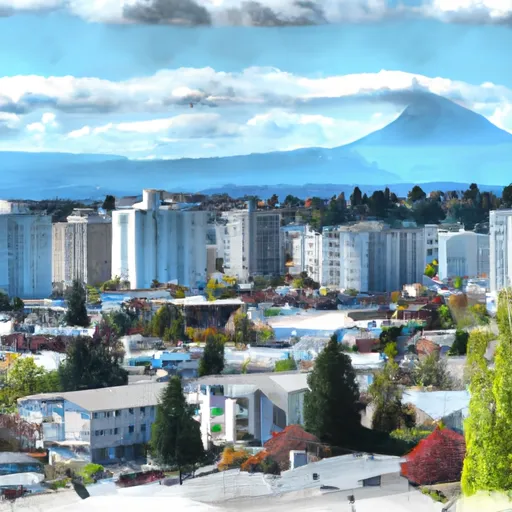-
 Snoflo Premium
Snoflo Premium
Get unlimited access to all our content
With no Ad interruptions! - Start Your Free Trial Login with existing account
Kahlotus
Eden Index
Climate
7.2
•
Recreation
1.8
•
Community
0.7
•
Safeguard
3.7/10

Kahlotus is a small town located in Franklin County, Washington. It experiences a semi-arid climate, characterized by hot, dry summers and cool winters. Summers see average high temperatures reaching the mid-80s°F (29-31°C), while winters can drop to the mid-20s°F (-4 to -7°C). Precipitation is relatively low, with an average annual rainfall of around 8 inches (20 cm).
The town is situated near the Snake River and is surrounded by natural beauty. The hydrology constituents of Kahlotus are primarily focused on the river system, providing opportunities for water-based activities such as fishing, boating, and kayaking. The Snake River is known for its diverse fish species, including trout, bass, and sturgeon.
Kahlotus is a haven for outdoor enthusiasts, with numerous recreational opportunities available. The area features several parks, campgrounds, and trails, offering opportunities for hiking, biking, and wildlife observation. The nearby Palouse Falls State Park is a popular attraction, showcasing breathtaking waterfalls and unique geological formations.
In conclusion, Kahlotus, Washington offers a semi-arid climate, limited precipitation, and a focus on the Snake River hydrology. Outdoor enthusiasts can enjoy activities such as fishing, boating, hiking, and wildlife observation in this beautiful region.
What is the Eden Index?
The Snoflo Eden Index serves as a comprehensive rating system for regions, evaluating their desirability through a holistic assessment of climate health, outdoor recreation opportunities, and natural disaster risk, acknowledging the profound impact of these factors on livability and well-being.
Climate Health Indicator (CHI): 7.2
Kahlotus receives approximately
271mm of rain per year,
with humidity levels near 86%
and air temperatures averaging around
11°C.
Kahlotus has a plant hardyness factor of
7, meaning
plants and agriculture in this region tend to thrive during the non-winter months.
By considering the ideal temperature range, reliable water supplies, clean air, and stable seasonal rain or snowpacks, the Climate Health Indicator (CHI) underscores the significance of a healthy climate as the foundation for quality living.
A healthy climate is paramount for ensuring a high quality of life and livability in a region, fostering both physical well-being and environmental harmony. This can be characterized by ideal temperatures, reliable access to water supplies, clean air, and consistent seasonal rain or snowpacks.
Weather Forecast
Streamflow Conditions
Upper Columbia
Area Rivers
Upper Columbia
Snowpack Depths
Upper Columbia
Reservoir Storage Capacity
Upper Columbia
Groundwater Levels
Recreational Opportunity Index (ROI): 1.8
The Recreational Opportunity Index (ROI) recognizes the value of outdoor recreational options, such as parks, hiking trails, camping sites, and fishing spots, while acknowledging that climate plays a pivotal role in ensuring the comfort and consistency of these experiences.
Access to outdoor recreational opportunities, encompassing activities such as parks, hiking, camping, and fishing, is crucial for overall well-being, and the climate plays a pivotal role in enabling and enhancing these experiences, ensuring that individuals can engage in nature-based activities comfortably and consistently.
Camping Areas
| Campground | Campsites | Reservations | Toilets | Showers | Elevation |
|---|---|---|---|---|---|
| Devils Bench - Snake River | 6 | 559 ft | |||
| Mathews- Snake River | None | 473 ft | |||
| Walker Park - Lake Sacajawea | None | 460 ft | |||
| Windust - Lake Sacajawea | 24 | 475 ft | |||
| Lake Emma - Lake Sacajawea | None | 460 ft | |||
| Ayer Boat Basin - Snake River | None | 540 ft | |||
| Fishhook Park | None | 465 ft |
Nearby Ski Areas
Catastrophe Safeguard Index (CSI):
The Catastrophe Safeguard Index (CSI) recognizes that natural disaster risk, encompassing floods, fires, hurricanes, and tornadoes, can drastically affect safety and the overall appeal of an area.
The level of natural disaster risk in a region significantly affects safety and the overall livability, with climate change amplifying these risks by potentially increasing the frequency and intensity of events like floods, fires, hurricanes, and tornadoes, thereby posing substantial challenges to community resilience and well-being.
Community Resilience Indicator (CRI): 0.7
The Community Resilience Indicator (CRI) recognizes that education, healthcare, and socioeconomics are crucial to the well-being of a region. The CRI acknowledges the profound impact of these elements on residents' overall quality of life. By evaluating educational resources, healthcare accessibility, and economic inclusivity, the index captures the essential aspects that contribute to a thriving community, fostering resident satisfaction, equity, and social cohesion.

